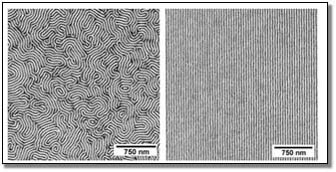 |
 Incubators of Life on Earth? Incubators of Life on Earth?
|
 |
 |
Spectacular, long-lived Lost City vents,
showing accretion of vent-building carbonate.
Credit: National Science Foundation, with cooperation from the
University of Washington |
Hydrothermal
Vent Systems Could Have Persisted for Millions of Years, Incubated
Early Life The staying power of sea-floor hydrothermal
vent systems like the bizarre Lost City vent field is one reason
they also may have been incubators of Earth's earliest life, scientists
report in a paper published in the July 25 issue of Science.
Discovered just two years ago, Lost City has the tallest vents ever
seen-the 18-story-tall vents at that site dwarf most vents elsewhere
by at least 100 feet. Water is circulated through the vent field
by heat from serpentinization, a chemical reaction between seawater
and the mantle rock on which Lost City sits, rather than by heat
from volcanic activity or magma, responsible for driving hydrothermal
venting at sites scientists have been studying since the early 1970s.
If hydrothermal venting can occur without volcanism, it greatly
increases the number of locations on the seafloor of early Earth
where microbial life could have started.
More... (posted
July 28, 2003)
|
 |
 |
LOVELY TO LOOK AT--BUT... A block copolymer
that organizes on its own (left), and via directed self-assembly
(right).
Credit: Paul F. Nealey |
Self-Assembling Devices at the Nanoscale
Scientists at the University of Wisconsin's Materials Research Science
and Engineering Center (MRSEC) on Nanostructures, Materials, and
Interfaces have demonstrated a technique that could one day allow
electronic devices to assemble themselves automatically -- giving
semiconductor manufacturers a way to mass-produce "nanochips" that
have circuit elements only a few molecules across, roughly ten times
smaller than the features in current-generation chips. "In terms
of storage alone, that could mean a computer with 4,000 gigabytes
of memory," says center director Juan de Pablo, a member of the
Wisconsin team, which is publishing its results in the July 24 issue
of the journal Nature. The Wisconsin MRSEC is one of 27
materials research centers established by NSF.
More... (posted
July 28, 2003)
|
 |
|
 |
The image shows an impression by David A. Hardy of a possible scene from a moon orbiting the extra-solar planet in orbit around the star HD70642. The planet has a mass about twice that of Jupiter and orbits the star in roughly six years, with a nearly circular orbit of more than three times the Earth-Sun distance. The star HD70642 is a 7th magnitude star in the southern constellation Puppis, and has properties very similar to that of our sun. The similarity in appearance of the extra-solar planet to Jupiter arises because the planets have a similar mass. The possible existence of the moons has been inferred from our knowledge of the planets in our own solar system and from theories of planetary formation—they have not actually been detected.
Photo Credit: David A. Hardy, astroart.org Copyright (c) Particle Physics and Astronomy Research Council |
Scientists Discover Planetary System Similar to Our Own
An international team of scientists has discovered a planet and star that may share the same relationship as Jupiter and our Sun, the closest comparison that researchers have found since they began their search for extra-solar planets nearly a decade ago. By analyzing light spectra collected with the 3.9-meter Anglo-Australian Telescope in Siding Spring, Australia, scientists from the United States, Australia, and Britain made precision measurements of the star HD 70642. The telescope data reveal a wobble in the star's position, an artifact from the gravitational tug of a planet roughly twice the size of Jupiter. The star is similar in size and structure to our Sun.
More... (posted July 28, 2003)
|
 |
|
 |
The experiment using microorganisms including the ciliates shown here indicates that historical events produce a remarkable variety of productivity-biodiversity relationships--a finding that would be difficult to reveal in natural ecosystems composed of large, slowly responding macroorganisms.
Photo Credit: Wilhelm Foissner, Andreas Zankl, University of Salzburg, Austria |
Biodiversity's Response to Ecosystem Productivity Depends on Historical Plant and Animal Relationships
Some thirty million species now live on Earth, but their spatial
distribution is highly uneven. Biologists since Darwin have been
asking why. Now, scientists funded by the National Science Foundation
(NSF), have discovered part of the answer: how plant and animal
communities originally assembled is a predictor of future biodiversity
and ecosystem productivity. "Despite its importance, species diversity
has proven difficult to understand, in large part because multiple
processes operating at various scales interact to influence diversity
patterns," said biologist Tadashi Fukami of the University of Tennessee
at Knoxville, lead author of a paper on the subject published in
the July 24th issue of the journal Nature.
More... (posted July 28, 2003)
|
 |
| |


|

